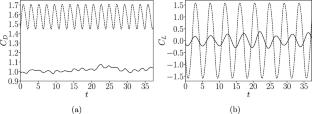Enhancing Unsteady Reynolds-Averaged Navier–Stokes Modelling from Sparse Data Through Sequential Data Assimilation and Machine Learning
Abstract
A Bayesian-based approach is developed to learn predictive turbulence-model corrections for unsteady flow simulations. A distinct feature of the present approach is its ability to perform such a learning task using limited data, which is characteristic of realistic configurations where full sampling can be difficult. Relying on the Expectation–Maximization formalism, the learning task is performed in two steps that optimally combine the strengths of data-assimilation and machine-learning techniques. In a first step, an Ensemble Kalman Filter is used to perform sequential state estimation, namely inferring full flow representations from the considered sparse unsteady data. In a second step, the thus-obtained full states are used to form a training dataset to build the turbulence-model corrections. The present methodology is employed to learn corrective terms for the unsteady Reynolds-Averaged Navier–Stokes (URANS) equations closed by the Spalart–Allmaras model. The sparse data that are used for training are given in the form of a limited number of spatially pointwise velocity observations that are extracted from a Direct Numerical Simulation of the flow past a circular cylinder at \(Re=3900\). It is shown that the corrected URANS model that is obtained via this strategy significantly outperforms the baseline model despite of the sparse nature of the considered data.
Graphical Abstract


 求助内容:
求助内容: 应助结果提醒方式:
应助结果提醒方式:


